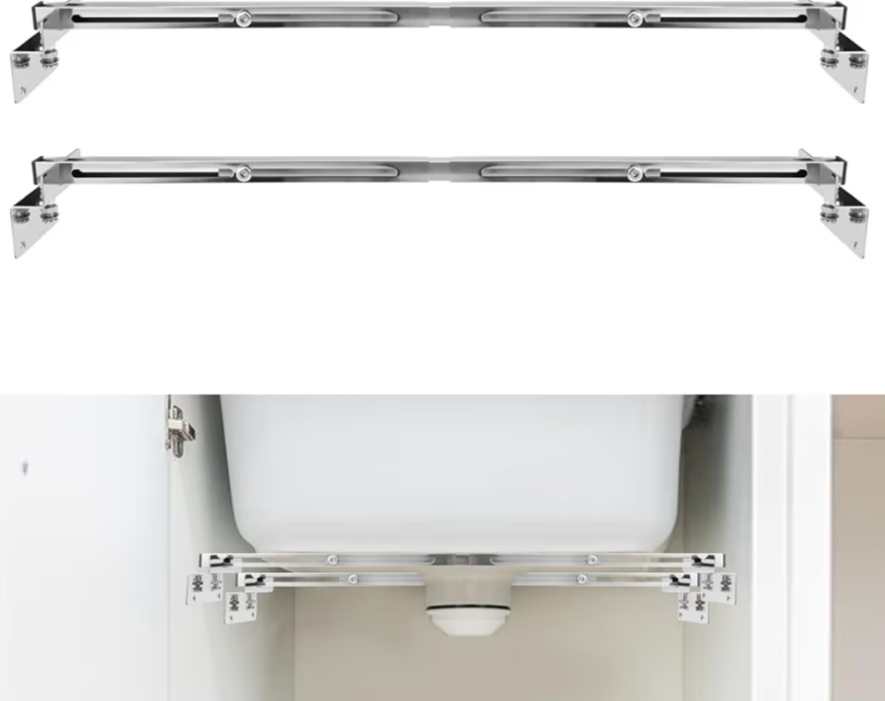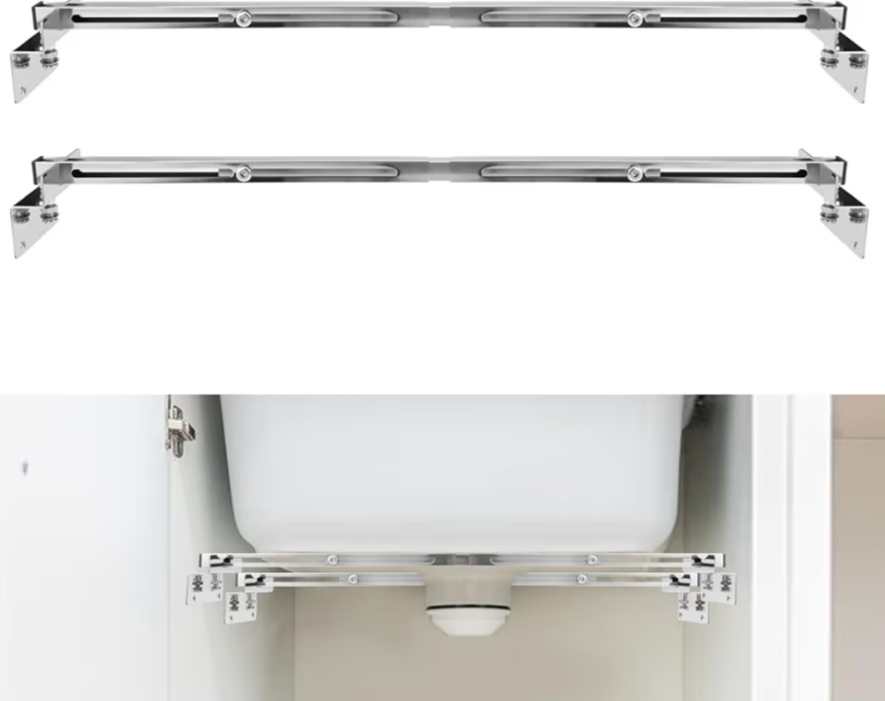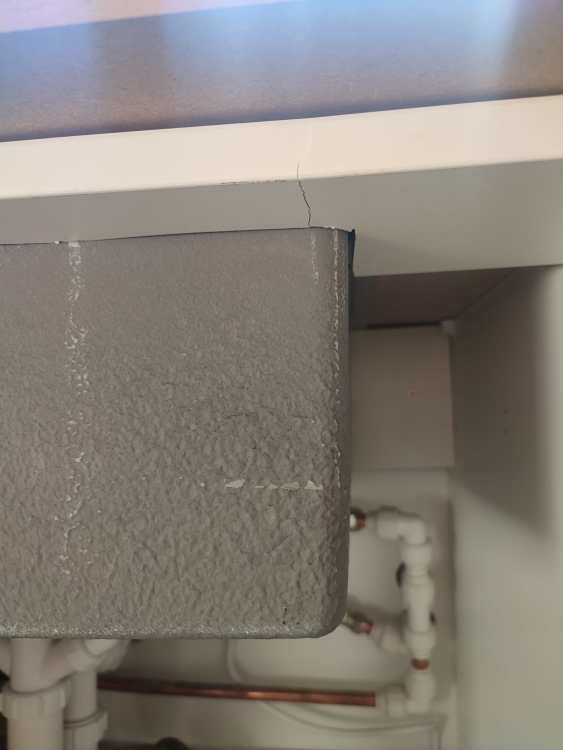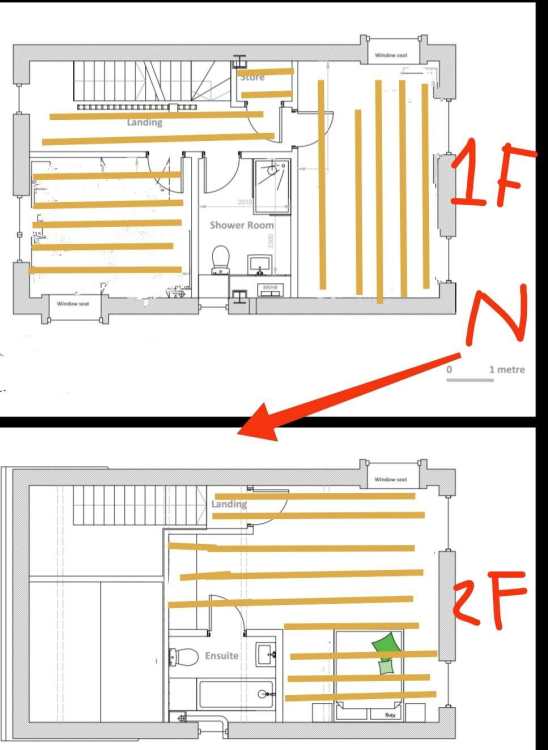
YorkieSelfBuild
Members-
Posts
97 -
Joined
-
Last visited
Everything posted by YorkieSelfBuild
-
Sorry to barge in on this topic, would you recommend underlay for Karndean Van Gogh Rigid Core LVT? Their website says underlay isn't needed. I'll be laying it on new flat particle board, so I'm hoping it's fine without putting down plywood.
-
Undermount sink fitted without supports
YorkieSelfBuild replied to YorkieSelfBuild's topic in Kitchen Units & Worktops
That's great, thank you. I don't want more delays to finish the kitchen, granite installers are due this Friday. I'll email them about the crack and if they can still install. Do I still need the steel support bars like this one? -
Undermount sink mounting options
YorkieSelfBuild replied to MJNewton's topic in Kitchen Units & Worktops
My sink didn't come with any clips. Sink is in temporarily since I've moved in before completion while waiting for a stone worktop. Problem is the front bar has cracked. Would something like attached photo support the sink's weight and would a baton underneath the front bar reinforce it so the whole unit doesn't need replacing? -
Hi, I bought a DIY Kitchens kitchen and got an undermounted sink elsewhere. The kitchen's been fitted, with a MDF worktop while I wait for the granite worktop to be installed. But the sink has no supports underneath it, it's resting just on the sink unit which has a crack now. The builder is saying DIY Kitchens should have supplied the supports but surely it depends on the sink I chose? And it's the fitter's job to know undermount sinks need extra support. The question is does the sink unit need replacing (from builder's pocket) or would a length of wood underneath it reinforce it enough?
-
I had better luck with Howden but only when house is completed. They asked if trees were within 7m, 5m high, nothing on species, and they had SIP as wall option. I got £270 quote from Aviva but I noticed policy says not close to river or cliff, I'll have to clarify quarry cliff is ok. So that puts my mind at rest. This is a massive financial gamble for me, not many options if it falls apart.
-
It's self build but with JCT contact with builder. Yes, that seems the best plan, keep site insurance for building, separate contents insurance. I used Go Compare and got some quotes! From £67 upwards. I chose walls as "prefabricated combustible" and roof as "tiles". Also no structural building (load bearing walls, extension) or renovation (electrics, plumbing are complete) works, cos bathrooms, kitchen and flooring are considered cosmetic. But it didn't ask about trees so I'll have to check each quote for that.
-
Thanks for the replies. It was GIS that went into so much detail when I said yes, there are trees within 15m. Then asked about distance, height, species. Others haven't asked those specific questions, just have you had subsidence, near water, etc. But all refused to quote when I said it's not completed. On trees, i just went and measured it. Nearest about 5m. Would that count as within 5m? They're sycamore and ash, plus hawthorn, apple, oak and willow (from the TPO plans), all can cause subsidence (thanks, Google). So now I'm thinking of continuing site insurance but get separate contents. So I tried Direct Line, 2 quotes, only difference was wall material. Brick £145, timber frame can't quote.
-
Hi I've tried getting quotes from GSI, Adrian Flux, etc and been refused, mainly cos it's not completed yet though being timber frame, SIP walls and concrete tile roof doesn't help. But I'm getting worried about the other questions, like are there trees within 15m and is there is cliff? I'm FTB so never had buildings insurance before. I have a wooded area at back and trees to one side, some with tree preservation orders. I thought the only issues with them was trimming branches, never thought about subsidence. Some trees are only about 4m away. Also the development is near the edge of an old quarry. Surveyor's report was all clear on if my house was going to fall down. Have a bought a dud, a clunker, a lemon, something that isn't insurable or ruinously expensive to insure?
-
What plank orientation?
YorkieSelfBuild replied to YorkieSelfBuild's topic in Wood & Laminate Flooring
Ha ha, no single plank direction, true, but still got the "arrows" -
Hi I currently have site insurance from BuildCare/BuildStore. Can I move in before completion? If I can, can I switch from site insurance to building and contents insurance? It doesn't cover contents and it's over £1200 pa. I think one solution is site insurance for building and separate contents insurance? I've read other posts so I have a list of insurers to contact for quotes (or find a broker) for TF house with less than 20% timber cladding. Cheers
-
What joinery is needed after fitting flooring?
YorkieSelfBuild replied to YorkieSelfBuild's topic in General Joinery
Thanks, nod. I was told banisters could go on before LVT, but I'll check. Hmm, reason joiners might not come back is being laid off by developers. So should be free if I hire them myself -
Hi As title says, what joinery is needed to finish a room after the flooring is installed? Is it doors, handles, locks, skirting and architrave and would one joiner be able to do all of that? The reason I'm asking is my builder has quoted high to install click LVT so I think I'll DIY it but that increases the timescale so their joiner might not have time to come back to finish the joinery. Cheers
-
What plank orientation?
YorkieSelfBuild replied to YorkieSelfBuild's topic in Wood & Laminate Flooring
I'm leaning towards all left to right now, which was my original idea. It's LVT so I'll loose lay to see if vertical works for that 1st floor bedroom. Thanks for all the replies! -
Hi, I'm trying to decide on the orientation of plank flooring. I think I'd prefer to avoid transition strips so the landing dictates it goes left to right. The right hand side bedrooms are complicated as they have double aspect windows so sunlight will come from top and right, and the 1st floor room's longest wall is vertical while the 2nd floor room's is horizontal. Currently I have the planks follow the longest wall. What do people think? Any suggestions to improve it? Cheers
-
Reasonable price to tile kitchen floor
YorkieSelfBuild replied to Post and beam's topic in Floor Tiles & Tiling
Bathroom wall and floor tiles 40m², £80/m² labour only. Got me over a barrel, builder delays, plasterer ill, etc. Or £116 if builder hires tiler and materials included. Another tiler dropped out cos dates kept getting moved, his £55 labour only is cheap in comparison! -
This seems good, encapsulated baseboard and GRP but way less than Carronite. https://www.plumbworld.co.uk/ceramica-single-ended-square-bath-with-side-and-end-panel-1700x700mm-762-1263778 42cm wide where I'd stand for showering but 185L capacity, same at that V&B bath Iceverge linked to. Is that too much?
-
Thanks everyone for the replies. I've seen this, it's GRP https://www.plumbworld.co.uk/ceramica-single-ended-square-bath-with-side-and-end-panel-1700x700mm-762-1263778 Great tip, I'll buy an extra leg set. Btw are they universal and fit any bath? Another tip I read elsewhere was add some batten to the stud wall underneath the bath edge. Maybe overlapping the edge as well? Is either of those a good idea?
-
Hi, I'm choosing my 1700 x 700 bath which will have a shower as well. What material and brands should I get? I want it to be sturdy enough to stand in while showering. • Standard acrylic 5mm like Carron Swallow £258? • Thicker 8mm acrylic like Carron Swallow £335? • Reinforced acrylic like Carronite Swallow? £481 • Steel with enamel coating like Kaldewei which start around £200 but likely something from £300? I've read forums elsewhere where some recommend Carronite or another reinforced acrylic but others say standard acrylic is fine. Is 8mm a good middle ground?





